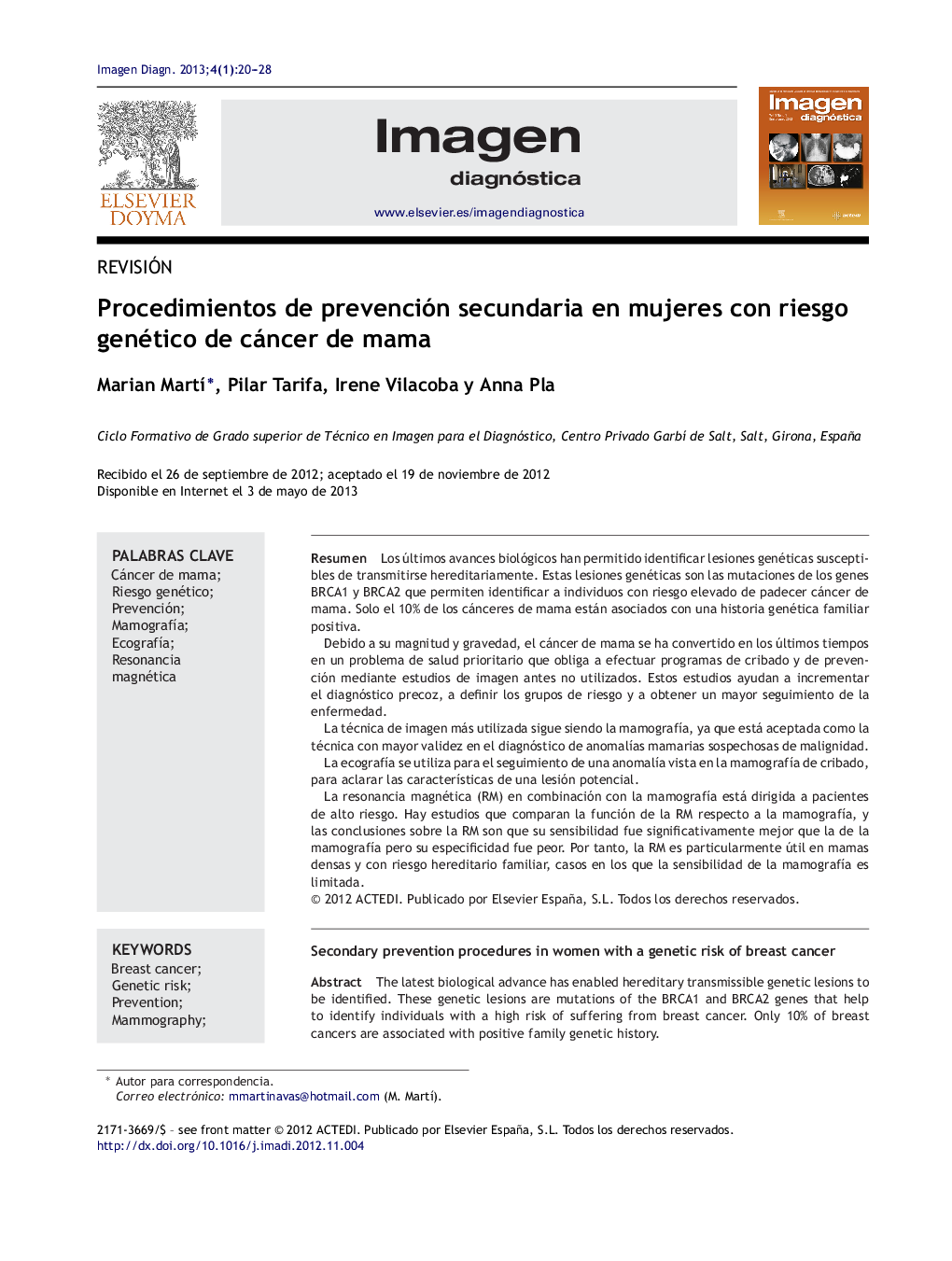| Article ID | Journal | Published Year | Pages | File Type |
|---|---|---|---|---|
| 2734081 | Imagen Diagnóstica | 2013 | 9 Pages |
ResumenLos últimos avances biológicos han permitido identificar lesiones genéticas susceptibles de transmitirse hereditariamente. Estas lesiones genéticas son las mutaciones de los genes BRCA1 y BRCA2 que permiten identificar a individuos con riesgo elevado de padecer cáncer de mama. Solo el 10% de los cánceres de mama están asociados con una historia genética familiar positiva.Debido a su magnitud y gravedad, el cáncer de mama se ha convertido en los últimos tiempos en un problema de salud prioritario que obliga a efectuar programas de cribado y de prevención mediante estudios de imagen antes no utilizados. Estos estudios ayudan a incrementar el diagnóstico precoz, a definir los grupos de riesgo y a obtener un mayor seguimiento de la enfermedad.La técnica de imagen más utilizada sigue siendo la mamografía, ya que está aceptada como la técnica con mayor validez en el diagnóstico de anomalías mamarias sospechosas de malignidad.La ecografía se utiliza para el seguimiento de una anomalía vista en la mamografía de cribado, para aclarar las características de una lesión potencial.La resonancia magnética (RM) en combinación con la mamografía está dirigida a pacientes de alto riesgo. Hay estudios que comparan la función de la RM respecto a la mamografía, y las conclusiones sobre la RM son que su sensibilidad fue significativamente mejor que la de la mamografía pero su especificidad fue peor. Por tanto, la RM es particularmente útil en mamas densas y con riesgo hereditario familiar, casos en los que la sensibilidad de la mamografía es limitada.
The latest biological advance has enabled hereditary transmissible genetic lesions to be identified. These genetic lesions are mutations of the BRCA1 and BRCA2 genes that help to identify individuals with a high risk of suffering from breast cancer. Only 10% of breast cancers are associated with positive family genetic history.Due to its magnitude and severity, breast cancer has become a priority health problem in the last few years, and has led to carrying out screening and prevention programs using previously unused imaging studies. These studies help to increase the early diagnosis, on defining risk groups and obtaining a better follow-up of the disease.The most used imaging technique continues to be mammography, as it is accepted as the technique with a greater validity in the diagnosis of suspected malignant breast anomalies.Ultrasound is used for the follow-up of an anomaly seen in the screening mammography, to clarify the characteristics of a potential lesion.Magnetic resonance (MR) in combination with mammography is directed at high risk patients. There are studies that have compared the function of MR compared to mammography, and the conclusions on MR were that its sensitivity was significantly better than that of mammography, but its specificity was lower. Thus, MR is particularly useful in dense breasts and with a familial hereditary risk, cases where the sensitivity of mammography is limited.
